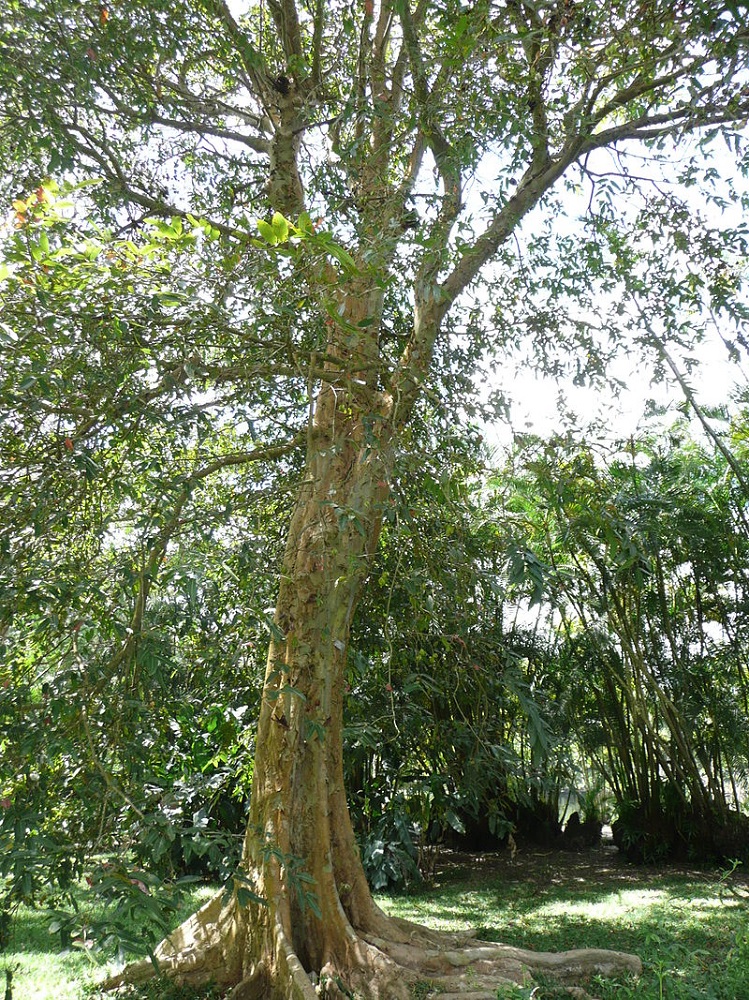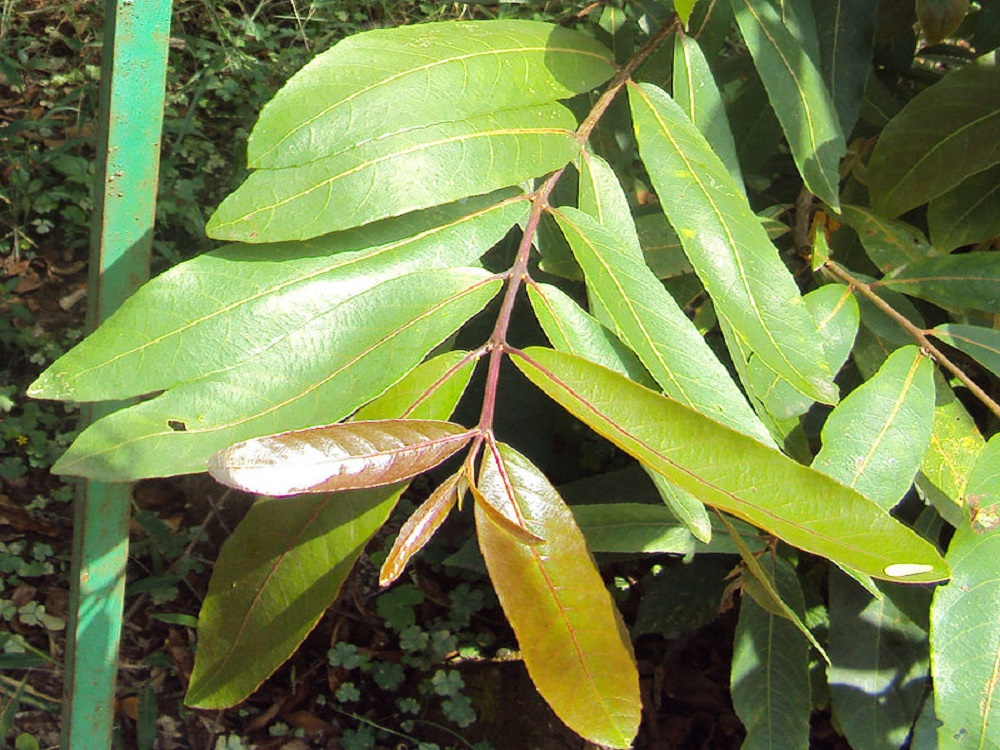Arjuna, Nirmatti - tropical almond

Terminalia arjuna
Summary
Scientific Classification
Kingdom: Plantae
Division: Angiospermae
Class: Dicotyledonae
Order: Myrtales
Family: Combretaceae
Genus: Terminalia
Species: T.arjuna
Scientific Name: Terminalia arjuna (Roxb) W. & A.
Common names
English: White marudah, tropical almond, arjun, Malabar almond, arjuna.
Hindi: koha, arjun, arjuna, arjan, kahu.
Kannada: Nirmatti.
Marathi: Arjuna, Arjun Sadada, Sadura.
Description
- Habit and Habitat: SEvergreen large tree, grows up to 20-25 meters in height. It Shedds its skin in time to time. Bark is smooth and grey. Marshy areas and on riverbanks. Banks of streams and rivers in central India.
- Distribution: The species is common in mixed dry deciduous tropical forests throughout the greater part of India, Sri Lanka, and Mayanmar.
- Morphology:

Leaf: Leaves simple, sub opposite, coriaceous, oblong or elliptic, hard, 10-20 cm long.
Inflorescence: short axillary spikes or small terminal panicles.
Flowers: Flowers are small, cup-shaped, regular, sessile, polygamous, white, creamy or greenish-white and strongly honey-scented. Calyx is glabrous and has five short triangular lobes.
Androecium: Stamens much exserted.
Gynoecium: Ovary glabrous. Disk densely yellowish-hairy.
Fruit: Fruit is ovoid dark brown to reddish brown fibrous woody, indehiscent drupe, glabrous with 5-7 equal thick narrow stiff-wings and striated with numerous upwards-curved veins.
Seeds: Obovoid, turgid.
Flowering and Fruiting time: April-July. June onwards.
- Propagation: by seeds.
- Importance: The timber is very useful for agricultural implements and boat-building. Leaves juice used in earache, externally used as a cover on sores and ulcers; Fruits used as tonic. Bark useful in fractures, ulcers, urethrorrhea, leucorrhoea, diabetes, cardiopathy, anemia cirrhosis of the liver and hypertension.
- Location: Botanical Garden.
 Trees of GSS Project supported by Makerspace Belgaum Website concept and designe by
Trees of GSS Project supported by Makerspace Belgaum Website concept and designe by